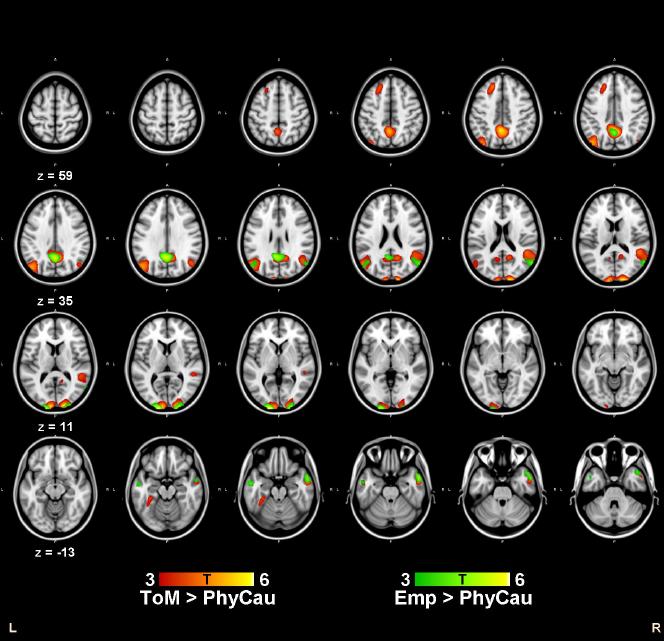Social cognition has a close relationship with social functioning. Impairment in Theory of Mind (ToM) and empathy has been demonstrated in patients with schizophrenia and individuals with psychosis proneness. However, the underlying mechanism of ToM deficit in individuals with schizophrenia spectrum disorders and the corresponding association with clinical symptoms are still not clearly understood.
In the present study, Drs. WANG Yi and CHAN Raymond from Institute of Psychology, Chinese Academy of Sciences examined the neural correlates underlying ToM and empathy and the relationships between the social cognitive abilities and individuals with schizotypy. They adopted a comic strips functional imaging task to examine the brain regions involved in the mentalizing process in individuals with schizotypy. Findings showed that the temporo-parietal junction (TPJ), the middle temporal gyrus, the medial prefrontal cortex, the cuneus and the precuneus were activated while these participants were performing the ToM task. The results also showed that social anhedonia scores, a negative dimension of schizotypy, had negative correlations with self-report empathy, but they were positively correlated with brain activity of the cuneus, the middle temporal gyrus and the TPJ.
These findings shed light onto the relationships between negative schizotypy and social functioning in schizophrenia spectrum. The positive correlations between brain activity and negative schizotypy suggested the potential compensation mechanisms early in the development of the psychosis.

Figure 1. The Brain activations associated with the ToM and Empathy conditions.
This study was supported by a grant from the “Strategic Priority Research Program(B)” of the Chinese Academy of Sciences, the National Science Fund China ,the Beijing Training Project for the Learning Talents in S&T, and a grant from the CAS/SAFEA International Partnership Program for Creative Research Teams. This paper is now available online in Frontiers in Behavioral Neuroscience.
